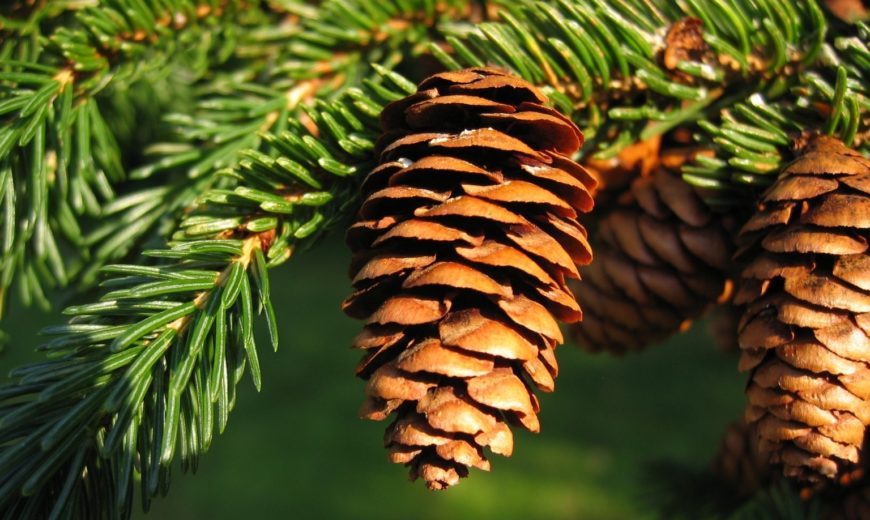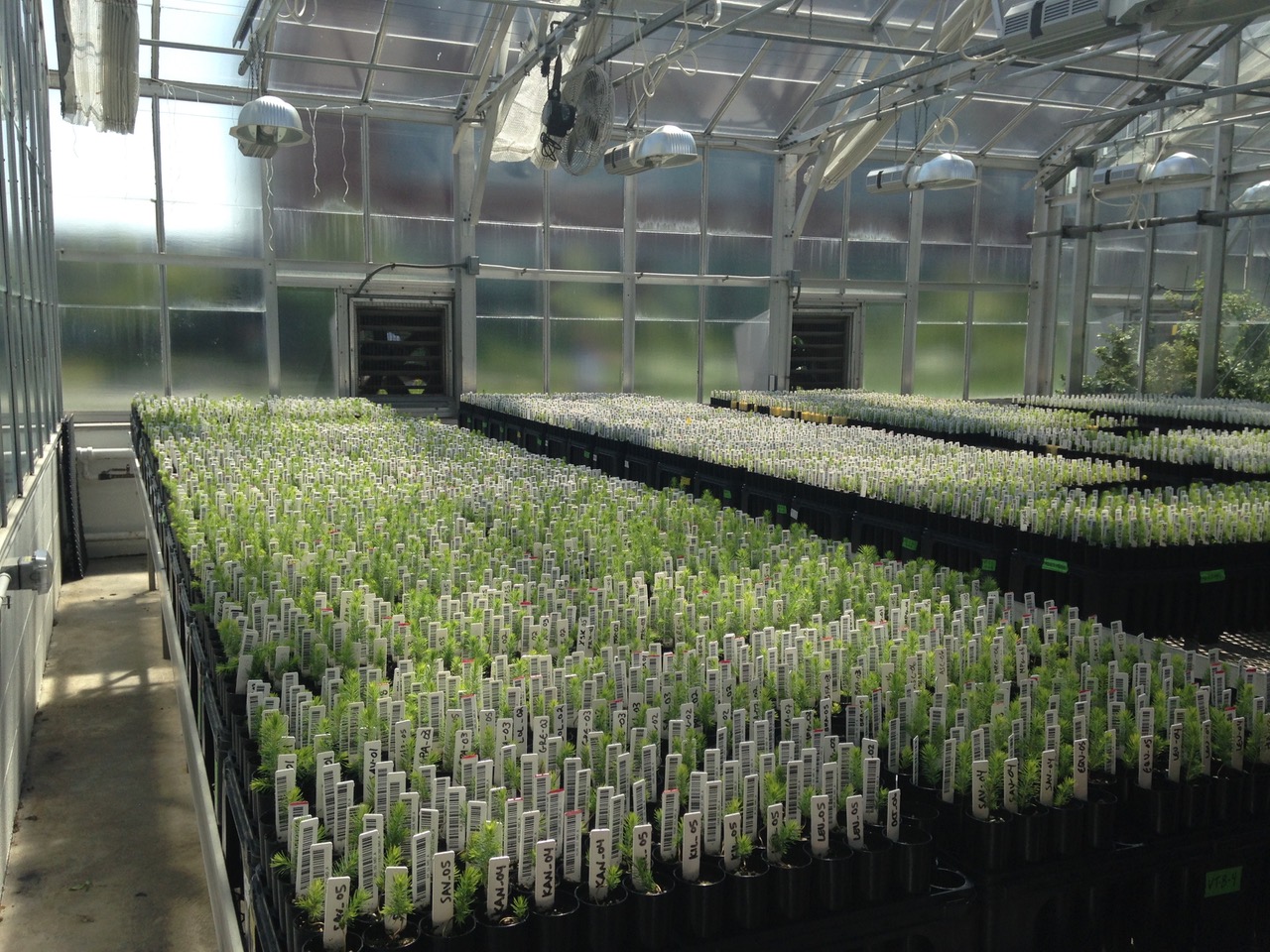20,000 Years of Climate Change: Red Spruce Tells the Story

Below the forest canopy at Lone Rock Point, near the outdoor chapel, a red spruce waits patiently. It is not much taller than a person, but it could be many decades old. It is waiting for a break, literally: a gap in the canopy that would allow it to creep upward and join the tallest trees in the forest.
There are few, if any, full-grown and naturally occurring spruce in Burlington. We think of red spruce as a montane tree, mingling with balsam fir on mountainsides across the northeast. It’s true that spruce does thrive in those cool, moist conditions. But the species wasn’t always so rare at lower elevations. Vermont biologist Charlie Cogbill and his colleagues ingeniously studied records of “witness” trees, which 18th-century surveyors used to mark parcel boundaries as they divvied up the land, to assemble a picture of what our forest looked like before the settlers cut most of it down. Spruce, he found, used to be about twice as common as it is now—the second most common tree in the northern New England forest. (The surveyors did not distinguish between different species of most kinds of trees, simply recording “spruce” or “maple,” but red spruce would have been the most common spruce in our region.)
The impressive recovery of our woods from an age of almost total deforestation is well known. So why hasn’t spruce made a comeback in Vermont’s valleys? Some ecologists point to the theory of alternative stable states—the idea that an ecosystem can stabilize around more than one configuration of species. Prior to European settlement, beech dominated our woods. Nowadays, this species plays second fiddle to maple, which, though we consider it the signature Vermont tree, rose to prominence only after deforestation; before that, it was less common than spruce and hemlock. As maple settled into its dominant role, our forest reached an alternative stable state.
No ecological forces are currently strong enough to push the forest back to its precolonial stable state, in which spruce was more prevalent. Such a force could and almost certainly will, however, propel our forest away from its maple-centric state, and it probably won’t be in a spruce-friendly direction. That force comes from rising CO2 levels in the atmosphere.
But what exactly will happen to red spruce as the climate changes, and how might we be able to keep it around? Last fall, a team of researchers armed with giant slingshots (I was one of them) set out into the woods, seeking the means to answer that question: spruce cones, dangling high above the forest floor. The seeds within hold the genetically diverse next generation that will respond to changes in the environment. Upon finding a fecund tree, the researchers launched a weighted line over a branch as high as 50 feet in the air, hauled up a length of saw-toothed chain, and carefully sawed down the end of the branch bearing cones. By a stroke of luck, 2017 was a banner mast year for many tree species, including spruce, so cones were plentiful throughout the region. (This year, the trees, spent from their efforts, have produced next to nothing.) Collection teams brought home seeds from 65 locations throughout the range of red spruce, from North Carolina to New Brunswick.

Close to a year later, the offspring of 340 mother trees are growing in the University of Vermont’s greenhouse—more than 10,000 seedlings. They are part of a vast experiment conducted by Dr. Stephen Keller of the UVM Plant Biology department, in partnership with the University of Maryland and the U.S. Forest Service Southern Research Station in North Carolina, with funding from the National Science Foundation. Next spring, these seedlings will be planted in outdoor common gardens at each of the three institutions, and their growth and survival will be monitored in these different climates.

We tend to think of all members of a species as sharing a recognizable set of traits that adapt that species to its environment. In fact, individual populations within a species, even on a scale as small as the bottom versus the top of the same mountain, are genetically variable and evolve over generations to adapt to their local conditions. Some of the mother trees in this experiment are isolated on mountaintop “islands” in the southern Appalachians, where red spruce took refuge as the climate at lower elevations grew too warm for them after the last ice age. Other mother trees live in the current core of the range in the northeast, which the species recolonized after the glacier retreated—places like Camel’s Hump and Mt. Mansfield. Thus, one seedling in the greenhouse might have inherited a growth strategy quite different from that of the seedling next to it.
By observing how representatives from each of 65 populations respond to the hot summers of the south compared to the frigid winters of the north, along with the myriad other intricacies of regional climate, the scientists running the experiment will be able to shed light on the potential futures of red spruce populations in New England and elsewhere. They are also sequencing the DNA of the 340 mother trees so they can tie the physical characteristics and growth responses of the seedlings to variation in the genes that control them, as well as infer the evolutionary history of the different populations.
The slow-growing red spruce may never again return to the prominent role it enjoyed in the precolonial forest, but there might still be a niche for it in New England’s future. In the seeds of every plant lies immense genetic diversity, which the species can draw on to adapt to changing conditions. By identifying which seeds have the best genes for succeeding in a particular climate, Dr. Keller and his team can help red spruce adapt faster. Their results will guide restoration efforts to return the trees to forests where they’ve been lost and to sustain their current populations in the face of climate change. In the meantime, red spruce will carry on adapting on its own. Evolution does not have to refer to grand events on an epic time scale: it happens from one generation to the next, between one mountain and the next, and it’s happening all the time.
Written by Sonia DeYoung
Feature Photo: Picea_rubens_UGA by KeithKanoti

> We tend to think of all members of a species as sharing a recognizable set of traits that adapt that species to its environment. In fact, individual populations within a species, even on a scale as small as the bottom versus the top of the same mountain, are genetically variable and evolve over generations to adapt to their local conditions.
> Evolution does not have to refer to grand events on an epic time scale: it happens from one generation to the next, between one mountain and the next, and it’s happening all the time.
wow. just wow.
cancelled!
great work 🙂